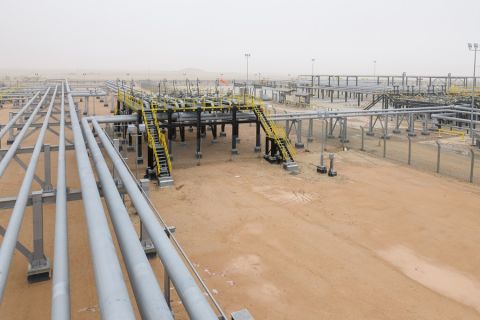More than 80% of oil production in the Gulf of Mexico remains shut in after Hurricane Ida, a U.S. regulator said on Sept. 6, more than a week after the storm made landfall and hit critical infrastructure in the region.
Energy companies have been struggling to resume production after Ida damaged platforms and caused onshore power outages. About 1.5 million bbl/d of oil production, or 84%, remains shut, while another 1.8 Bcf/d of natural gas output, or 81%, was offline, the Bureau of Safety and Environmental Enforcement said.
A total of 99 oil and gas production platforms remain evacuated, down from the 288 originally evacuated.
“The entire region is still struggling with resupply,” said Tony Odak, COO of Stone Oil Distributor, which supplies fuel to the offshore industry. “The refiners are coming back up slowly, but there is so much infrastructure that needs to be brought back online and inspected as well.”
Five refineries in Louisiana remained shut on Sept. 6, accounting for about 1 million bbl/d of refinery capacity, or about 6% of the total U.S. operable refining capacity, the Department of Energy (DOE) said.
All three refineries in the Baton Rouge area and one near New Orleans have begun to restart, accounting for 1.3 million bbl/d of refining capacity, DOE said. However, the refiners will not produce at full rates for several days.
Operations remain limited at the Louisiana Offshore Oil Port (LOOP) marine terminal, and repairs are under way, DOE said.
Royal Dutch Shell Plc, the largest U.S. Gulf Coast producer, on Sept. 5 began redeploying staff to its Enchilada and Salsa platforms.
The region is still struggling with power outages, after Ida knocked out power to more than 1 million people last week. As of the morning of Sept. 6, there were still about 573,000 outages due to Ida, including 568,000 customer outages remaining in Louisiana, DOE said.
The U.S. Coast Guard said on Sept. 6 it was investigating nearly 350 reports of oil spills in and along the U.S. Gulf of Mexico in the wake of the storm.
The lower Mississippi River and New Orleans ports were reopened to traffic and cargo operations, allowing the resumption of grain, metal and energy shipments.
Recommended Reading
Shipping Industry Urges UN to Protect Vessels After Iran Seizure
2024-04-19 - Merchant ships and seafarers are increasingly in peril at sea as attacks escalate in the Middle East.
Paisie: Crude Prices Rising Faster Than Expected
2024-04-19 - Supply cuts by OPEC+, tensions in Ukraine and Gaza drive the increases.
Brett: Oil M&A Outlook is Strong, Even With Bifurcation in Valuations
2024-04-18 - Valuations across major basins are experiencing a very divergent bifurcation as value rushes back toward high-quality undeveloped properties.
Marketed: BKV Chelsea 214 Well Package in Marcellus Shale
2024-04-18 - BKV Chelsea has retained EnergyNet for the sale of a 214 non-operated well package in Bradford, Lycoming, Sullivan, Susquehanna, Tioga and Wyoming counties, Pennsylvania.
Defeating the ‘Four Horsemen’ of Flow Assurance
2024-04-18 - Service companies combine processes and techniques to mitigate the impact of paraffin, asphaltenes, hydrates and scale on production—and keep the cash flowing.



